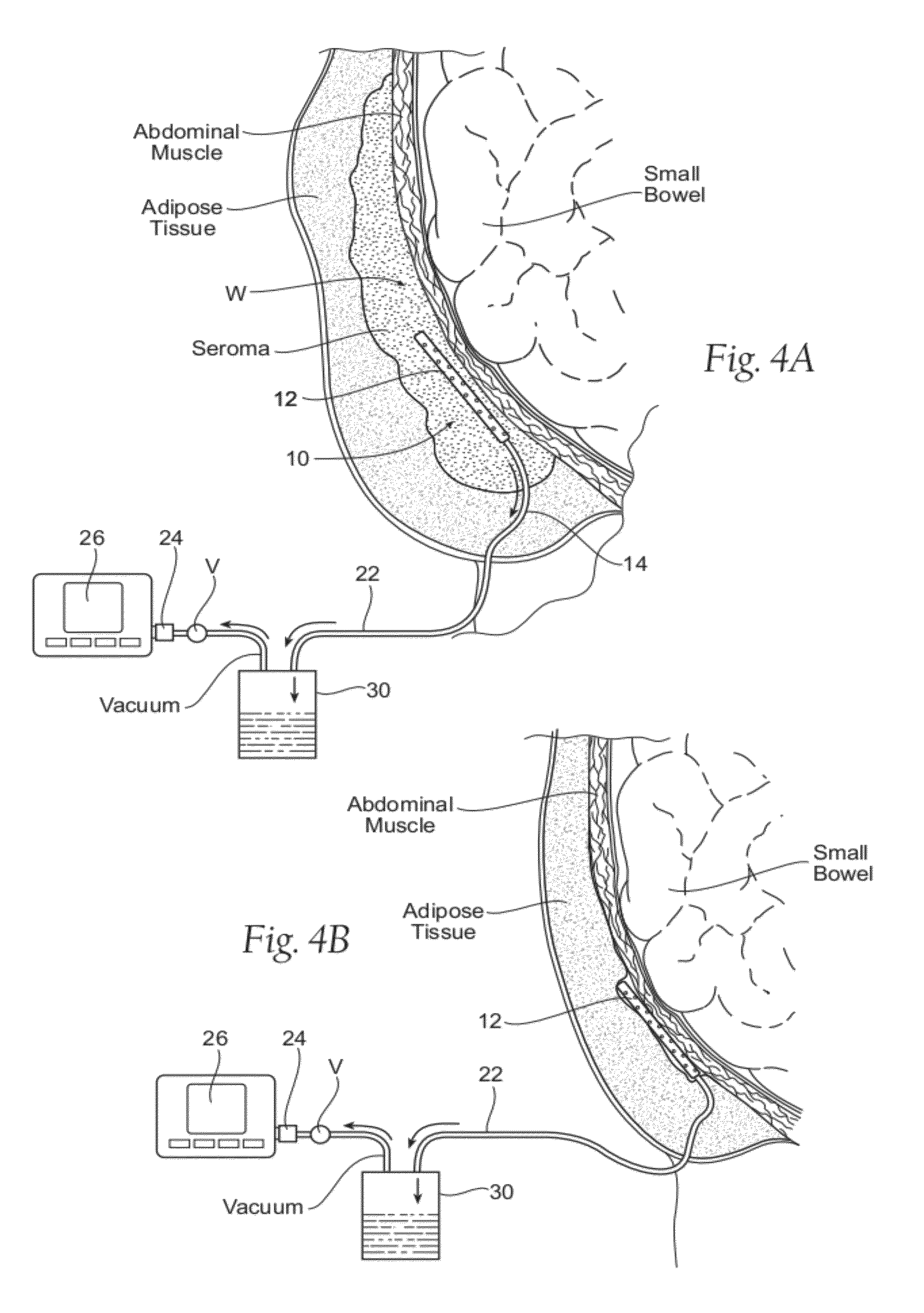Assemblies, systems, and methods for vacuum assisted internal drainage during wound healing
a vacuum assisted and internal drainage technology, applied in the field of assemblies, systems and methods for vacuum assisted internal drainage during wound healing, can solve the problems of insufficient clearing of wound voids, fluid still in the body, and current wound drain technology is not effective at adequately clearing wound voids, etc., to achieve enhanced wound healing benefits, promote tissue adherence, and increase the nature and extent of wound drainag
- Summary
- Abstract
- Description
- Claims
- Application Information
AI Technical Summary
Benefits of technology
Problems solved by technology
Method used
Image
Examples
example
[0107]Wound drain assemblies having the technical features described above were placed into internal wound voids surgically created in a porcine model. Also concurrently placed into surgical created wound voids in the same porcine model were conventional wound drains. The performance of efficacy of the wound drain assemblies were compared to the performance and efficacy of the conventional drains over a period of eight days.
[0108]More particularly, following induction of general anesthesia, prefascial pockets were elevated with scissor dissection through ten (10) cm incisions on left and right lateral sides of a pig over the latissimus dorsi muscles and external oblique muscles, just posterior to the front legs. The left and right side pockets were placed six (6) cm off the midline to assure the pockets were kept separate. Bovie cautery was used for hemostatsis and pockets were irrigated with a triple antibiotic solution used in implant surgery, comprising 1 gm of Ancef, 80 mg of Ge...
PUM
 Login to View More
Login to View More Abstract
Description
Claims
Application Information
 Login to View More
Login to View More - R&D
- Intellectual Property
- Life Sciences
- Materials
- Tech Scout
- Unparalleled Data Quality
- Higher Quality Content
- 60% Fewer Hallucinations
Browse by: Latest US Patents, China's latest patents, Technical Efficacy Thesaurus, Application Domain, Technology Topic, Popular Technical Reports.
© 2025 PatSnap. All rights reserved.Legal|Privacy policy|Modern Slavery Act Transparency Statement|Sitemap|About US| Contact US: help@patsnap.com



